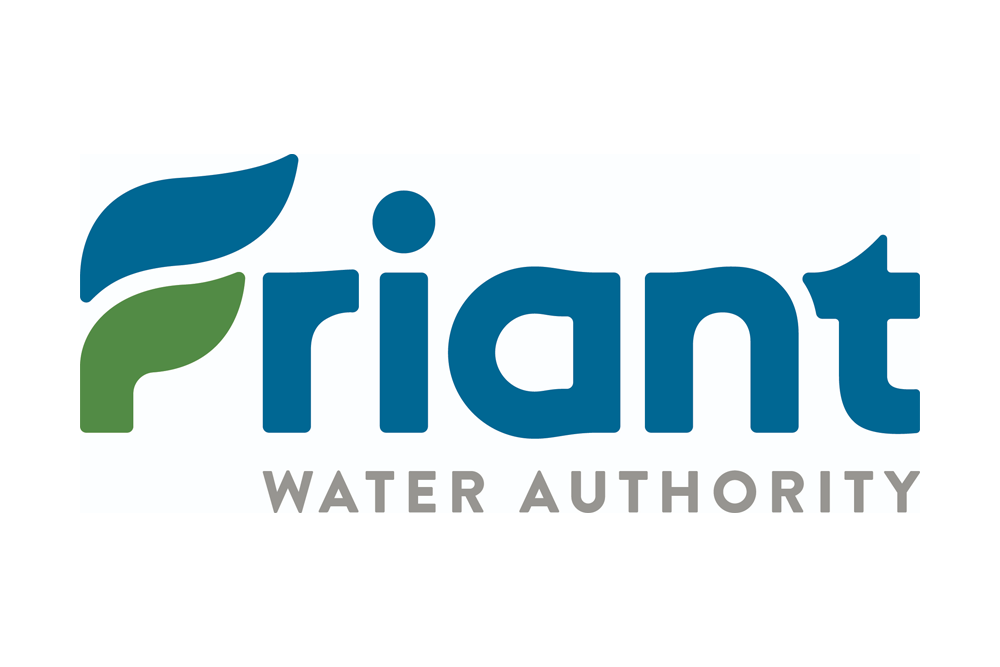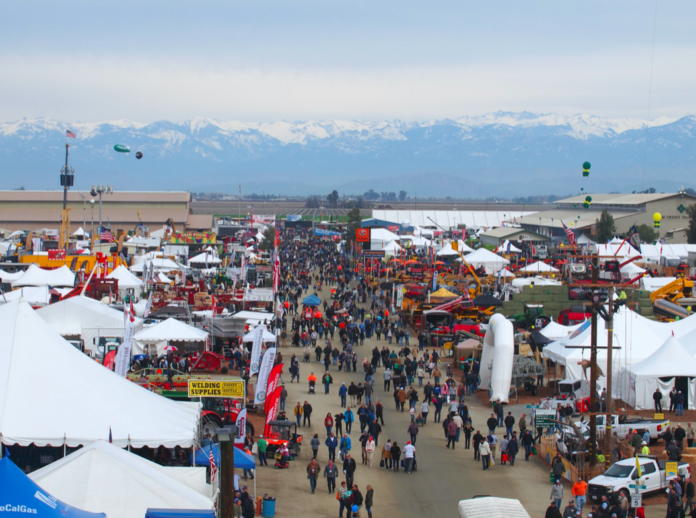 The Tulare Irrigation District held its board of directors meeting on Tuesday, May 10, 2022 on Zoom. The entire meeting is advertised as taking place remotely. I like Zoom, I like saving on gas but I miss the breakfast burritos. TID doesn’t serve lunch but it does put out some great breakfast food. You can get a ham and egg burrito, linguica and egg, I think a bacon and egg – all with cheese. I like a little spice so a couple of years ago I tried something called Dave’s Death Sauce. I learned something about molten lava, nuclear waste and ghost peppers. This is not your abuela’s Tabasco. However, I can see the attraction. It made my face go numb which was a relatively pleasant sensation after the initial trauma of what the third circle of hell must be. I’ve dabbled since but with a very small amount on a toothpick applied sparingly.
The Tulare Irrigation District held its board of directors meeting on Tuesday, May 10, 2022 on Zoom. The entire meeting is advertised as taking place remotely. I like Zoom, I like saving on gas but I miss the breakfast burritos. TID doesn’t serve lunch but it does put out some great breakfast food. You can get a ham and egg burrito, linguica and egg, I think a bacon and egg – all with cheese. I like a little spice so a couple of years ago I tried something called Dave’s Death Sauce. I learned something about molten lava, nuclear waste and ghost peppers. This is not your abuela’s Tabasco. However, I can see the attraction. It made my face go numb which was a relatively pleasant sensation after the initial trauma of what the third circle of hell must be. I’ve dabbled since but with a very small amount on a toothpick applied sparingly.
The Meeting
The meeting was called to order by Chairman David Bixler at 9:00am. One man from the public showed up but had to go out of the boardroom to participate remotely. The only public comment was to hang in there. The minutes were approved and Water Master Marco Crenshaw said something funny I missed but he had the board rolling.
Water Ops
Good thing Crenshaw started on a funny note because the rest of his report was the opposite of funny. Lake Kaweah holds almost 200,000 a/f and it will barely reach half that amount. This is still better than Lake Shasta but both it and Folsom did pick up a small but significant in relation amount of inflow from the latest storm. I’d heard the ASO was flying and General Manager Aaron Fukuda said that’d be reported on later in the meeting.
Crenshaw said there will be some water from deals made with the City of Visalia, maybe 4,500 a/f total this year. Fukuda said Friant is still at 15 percent and that has been a heavy lift by Friant and the US Bureau of Reclamation.
Fukuda said the ASO was going to make another flight but for what purpose? Just to show there is almost no snow? However, DWR said they’d pay for it. The last flight in April showed only a little more than 300,000 a/f snow water equivalent. That is a paltry amount for this time of year. This is the season for the weather to warm and the big inflows start coming down. The 300,000 a/f will not translate into inflow. There is recharge and evaporation to figure in.
O&M
Superintendent Wayne Fox gave his report saying herbicides are expensive and getting rarer. The cost has tripled due to the supply chain. He said there are more weeds during dry times – more area for them to grow? Fox said the lack of water in channels also increases the trash from homeless folks and illegal dumpers. He also said, if I understood correctly, while maintenance on equipment isn’t being deferred it is being carefully applied with an eye on cost savings.
increases the trash from homeless folks and illegal dumpers. He also said, if I understood correctly, while maintenance on equipment isn’t being deferred it is being carefully applied with an eye on cost savings.
Financial Report
Controller Kathi Artis gave her report saying the negatives are current assessments, fees and charges but it is early in the season. So far water has cost TID more than $2 million. The district is experiencing a $300,000 loss so far. There is more than enough to cover that in reserves. The budget update in June should look better or at least more accurate. The board agreed to pay its bills and approve Artis’ report. Fukuda also said there was some vandalism on a SCADA unit.
TID is looking at a 218 Election. Prop 218 is a law that requires special districts to hold an election before increasing assessments. Fukuda explained the costs from the Friant Water Authority and San Luis Delta Mendota O&M are going up. There has been a miscalculation in the methodology that could impact those O&M costs by one percent. That’s a lot of money for an annual combined O&M that tops $100 million. It could hit TID growers with an $87 to $189 per acre.
Director Dave Martin said the $189 per acre will put him and many other small growers out of business. Fukuda agreed the high figure won’t work for TID growers. There was a long report from Provost & Pritchard Engineering’s Matt Klinchuch and some financial advisors.
Engineering
TID Engineer and all around nice guy Jeremy Barroll reported on a housing development that would like to put a bridge over a TID canal. There is a City of Visalia stormwater pump stuck in the middle. The plans were put up on screen and Fukuda said the type of bridge is well designed and above specs. Also the city has to do all the maintenance and upkeep on its dime.
The next project Barroll presented was a storm drain near another residential development. There is a TID pipe and the developers want to move the drain four feet.
Self Help Enterprises is building affordable housing in the form of apartments and need to put a driveway over the top of a pipeline. There is a common use agreement that protects TID but puts Self Help in the sites of liability. Self Help wants to void that agreement but TID won’t go for it. Also, the pipeline isn’t designed to handle traffic and TID wants a new pipe designed to take the load or build a bridge. Self Help doesn’t want to do this either. Fukuda said all the of the other developments in this subdivision have had to adhere to these agreements and conditions. He said this was as far back as when David Zach worked at TID. Fukuda said in his opinion it would be best to build a bridge/slab/reinforced structure over the pipe. He said cutting the pipe and replacing the section under the driveway would create two weak points. The pipe is old and was adequate when this land was an open field. Fukuda said there will be a meeting with some of Caltrans’ upper management on some issues along Highway 99. TID’s legal counsel will be there as well.
SGMA
Fukuda said there was a SGMA presentation at the recent ACWA conference. Some of the SGMA projects can save several million dollars by being CEQA exempt. He said the state has been cooperative in that respect.
The gov issued executive order N-7-22 in March that screwed up well permitting. It was poorly thought out. It pits counties against GSAs, domestic wells against other well types. TID is in the Mid Kaweah GSA with Fukuda as GM and Martin as a board member. Fukuda said the GSA has been working with Tulare County and was critical of the county health department and county counsel. The county dumped forms on the GSAs and were not willing to listen to any response after review. The forms the county produced included an option for a hydrogeologist to state the new well will not be a problem. In Fukuda’s opinion no sane hydrogeologist would sign such a document. I agree that hydrogeologists are a pretty crazy bunch but they’re not that crazy. Fukuda said something like Tulare County is trying to construct a major CYA and indemnify itself.
willing to listen to any response after review. The forms the county produced included an option for a hydrogeologist to state the new well will not be a problem. In Fukuda’s opinion no sane hydrogeologist would sign such a document. I agree that hydrogeologists are a pretty crazy bunch but they’re not that crazy. Fukuda said something like Tulare County is trying to construct a major CYA and indemnify itself.
Fukuda said the well application needs to include if the well is a replacement or a well with new use. Overall having all the well owners aware of what is at stake is a good thing. But this is a convoluted way to do it. There are currently 11 permits pending in the MKGSA.
The MKGSA emergency ordinance went into effect on May 1st. Fukuda reported the water dashboard should be ready in the next week or so. This is the ordinance that sets the cost of over pumping beyond the yields allowed by the GSP. The window to register for the Land IQ Water Dashboard for the Kaweah Subbasin is open and landowners will be able to come into the TID offices and sign up their land for the evapotranspiration estimates. Fukuda said a firm in Fresno is now doing the snail mailing for notices. He said they are saving a good deal of money and sanity by outsourcing the task. Someone said enforcement for pumping violations goes by the name of attorney Valerie Kincade. I think it was one of the board members who said she dresses nice but you’d best not mess with her.
deal of money and sanity by outsourcing the task. Someone said enforcement for pumping violations goes by the name of attorney Valerie Kincade. I think it was one of the board members who said she dresses nice but you’d best not mess with her.
The Kaweah Subbasin GSP was deemed incomplete and there have been weekly meetings with DWR to rewrite and Fukuda said so far there have been no red flags and critical areas in question are being addressed. Subsidence and groundwater levels are two of the big issues and viable responses are in-play. The one concern that is on Fukuda’s mind is the interconnected surface water portion of the GSP. That issue doesn’t really impact MKGSA as much as the Greater and Eastern Kaweah GSAs. However, the entire Kaweah Subbasin is at stake. This issue is behind schedule and there weren’t any questions put forth at the last meeting. Fukuda showed some of the GSP updates and praised both Montgomery & Associates and Provost & Pritchard saying have done amazing analytical work to get as much done as they have.
much as the Greater and Eastern Kaweah GSAs. However, the entire Kaweah Subbasin is at stake. This issue is behind schedule and there weren’t any questions put forth at the last meeting. Fukuda showed some of the GSP updates and praised both Montgomery & Associates and Provost & Pritchard saying have done amazing analytical work to get as much done as they have.
Friant
Next Fukuda said work on the Friant Kern Canal is moving right ahead and what schedule changes that have taken place have not impacted the construction timeline. He also said an excellent presentation by Bill Luce and Don Portz about the San Joaquin River Restoration Program was given at last month’s Friant meeting. Director Rick Borges said he has a lot of questions still and he sat through the presentation.
Restoration Program was given at last month’s Friant meeting. Director Rick Borges said he has a lot of questions still and he sat through the presentation.
The presentation said the SJRRP started in 2011 with fall Chinook and in 2016 the spring Chinook run was included. If 500 mating pairs can make it back to just below Friant Dam this will be considered a success. So far the best return was 93 pairs in 2021. The cost to complete the necessary infrastructure is in the hundred of millions of dollars. Since Ernest Conant has taking the helm at the Bureau offices in Sacramento things are starting to move again.
Legislation
AB 2201 is the bill by Assemblyman Steve Bennett that was used by the gov to write 9a and 9b of the executive order. It was amended on April 27th and has all manner of unpleasant features including forcing GSAs to post well applications online for 30-days. It also excludes domestic or wells yielding 2 a/f or less. ACWA is holding ag committee meetings now and they are having a good turnout including members from Southern California. There was talk about how the reduced return on investments will impact all of the state and the nation. ACWA is also taking an opposed unless amended position on AB 2201.
meetings now and they are having a good turnout including members from Southern California. There was talk about how the reduced return on investments will impact all of the state and the nation. ACWA is also taking an opposed unless amended position on AB 2201.
GM Report
Fukuda said the Friant dinner at ACWA was attended by just about all the Valley Assembly and State Senate office holders. It was the event of the season. The Water Plan Update included a lot of comments about how studying climate change is not nearly as productive as doing something about it. More storage now, not electric cars.
Cultivate California is a program administered by the California Farm Water Coalition. Fukuda said it is struggling to raise money and it would be better to have Friant give and then all the districts can pool their resources. He said he’d be willing to give $5,000 to Friant to pass on but Friant isn’t too warm on this program. He is willing to approach Friant to do this. There is a general consensus that ag doesn’t tell its story well. There is a question about how effective education is as opposed to advocacy. Fukuda said CFWC’s Mike Wade is doing some reach out. Martin said he was once on a water tour with a well-known grower, Lucille Demetrif. Lucille is a very sweet lady. She could be anyone’s beloved grandmother. Someone from Fish & Game or somewhere made some nonsensical statement and Lucille stopped him by asking if he likes to eat. Good for her. I had to go to the next meeting at noon and the Tulare ID board meeting still had a full head of steam. So that’s it for this month.
a well-known grower, Lucille Demetrif. Lucille is a very sweet lady. She could be anyone’s beloved grandmother. Someone from Fish & Game or somewhere made some nonsensical statement and Lucille stopped him by asking if he likes to eat. Good for her. I had to go to the next meeting at noon and the Tulare ID board meeting still had a full head of steam. So that’s it for this month.
DISCLAIMER OF RESPONSIBILITY; Waterwrights strives to provide clients with the most complete, up-to-date, and accurate information available. Nevertheless, Waterwrights does not serve as a guarantor of the accuracy or completeness of the information provided, and specifically disclaims any and all responsibility for information that is not accurate, up-to-date, or complete. Waterwrights’ clients therefore rely on the accuracy, completeness and timeliness of information from Waterwrights entirely at their own risk. The opinions expressed in this report are those of the author and do not represent any advertisers or third parties.
ALL RIGHTS RESERVED. Copyright 2022 by WaterWrights.net/DAW
TULARE IRRIGATION DISTRICT
6826 Ave 240, Tulare, CA 93274 Office: 559/686-3425
Board: David G. Bixler- President, Richard S. Borges, Jr.-Vice President, Scott Rogers, Dave Martin & Michael Thomas
Staff: Aaron Fukuda-General Manager, Jeremy Barroll-Engineer, Kathi Artis–District Controller, Wayne Fox–Superintendent, Marco Crenshaw–District Watermaster & Alex Peltzer-Attorney.
About: The Tulare Irrigation District was organized September 21, 1889. The original proposal for the formation of an irrigation district covering 219,000 acres, extending from the Sierra Nevada foothills to Tulare Lake, was eventually reduced to 32,500 acres. The District continued in this status until January of 1948 when the so-called Kaweah Lands” (approximately 11,000 acres) were annexed. In October of 1948, approximately 31,000 acres, compromising the area served by the Packwood Canal Company were annexed to the District. A U.S. Bureau of Reclamation contract was signed in 1950 providing an annual supply of 30,000 acre-feet of Class 1 water, and up to 141,000 acre-feet of Class 2 water from the Friant-Kern Canal. The District and the Kaweah Delta Water Conservation District have coordinated efforts to enhance the recharge of groundwater within the Kaweah Basin. During high flow times KDWCD may use the recharge basins with the District for recharge purposes. Further, KDWCD has historically provided for a financial incentive program through which the District sustains the level of groundwater recharge from supply sources into the District. This historical program was recently reinstated by both districts in lieu of the District’s plans to concrete-line this canal to conserve the surface water. TID is a member of the Mid Kaweah GSA DWR#-5-022.1


































